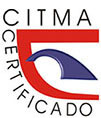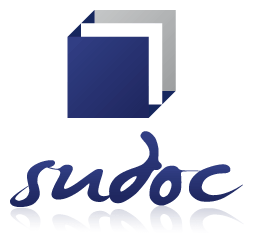The history of America told by its men. The configuration of the Latin American native from the Martian perspective in various texts of La Edad de Oro
Keywords:
indigenous subjectAbstract
Martí’s literature for children has been studied over the years by critics from Cuba, Latin America and many overseas regions. This type of literature cultivated by the Apostle offers dissimilar edges to be fully studied, especially from a perspective of reinvindication for the child subject. One of the most interesting and yet less studied points, in all its dimensions, is the presentation of the native in Martí's literary work dedicated to children. For such reason this article is presented. In order to conduct the research successfully, our fundamental objective is to carry out an analysis of the literary and philosophical mechanisms that José Martí used to present the Latin America native as a cultural subject. To fulfill the aforementioned objective, the studies conducted mainly by the Centro de Estudios Martianos have been taken into account due to their updating and relevance, as well as published articles related to the subject in question and its representation in Latin American literature and culture. Moreover, the stories from La Edad de Oro in which the native, and their traditions and cultural manifestations are best portrayed- have been selected. The aim of this study is to locate and culturally characterize the Latin American native within the work of Martí.
Downloads
References
ALEMANY BAY, C. (2013). La narrativa sobre el indígena en América Latina: Fases, entrecruzamientos, derivaciones. Acta literaria, (47), 85-99.
ARAUJO, K. (2010). Configuraciones de sujeto en la modernidad latinoamericana: el caso de Perú a inicios del siglo XX. Revista chilena de literatura, (76), 5-25.
BEIGEL, F. (2001). Mariátegui y las antinomias del indigenismo. Utopía y Praxis Latinoamericana, 6(13), 36-57.
GARRELS, E. (1997). Sobre indios, afroamericanos y los racismos de Sarmiento. Revista Iberoamericana, 63(178), 99-113.
GUTIÉRREZ NÁJERA, M. (1990). La Edad de Oro de José Martí. Revista Revolucionaria
y Cultura.
GONZÁLEZ, D. G. (2008). Un asunto tenebroso. La construcción del sujeto literario en Roberto Bolaño. In Anales de literatura chilena N.o 10. Pontificia Universidad Católica de Chile, Centro de Estudios de Literatura Chilena.
LANDA, J. (2005). Reivindicación del gusto: sujeto, experiencia estética y recepción literaria. Signos filosóficos, 7(14), 45-71.
BEGRICH, A. (2007). El encuentro con el otro según la ética de Levinas. Teología y cultura, 4(7), 71-10.
MARTÍ, J. (1889). Carta a Manuel Mercado 3 de agosto de 1889, Obras Completas, vol. 20. La Habana: Editorial de Ciencias Sociales.
MARTÍ, J. (1991a). La historia del hombre contada por sus casas. Obras Completas, vol. 18. La Habana: Editorial de Ciencias Sociales, 359-362.
MARTÍ, J. (1991b). Las ruinas indias, en Obras completas 18, La Habana: Editorial de Ciencias Sociales, 380-389.
MARTÍ, J. (1991c). Un juego nuevo y otros viejos en Obras Completas vol. 18. Editorial de Ciencias Sociales, La Habana, 337-343.
MONTES DE OCA, A. (2010). Sujeto y narración: algunos recorridos en la Utopía Copi. Mora (Buenos Aires) 16(2). En: http://biblioteca.versila.com/51562341/sujeto-y-narracion-algunos-recorridos-en-la-utopia-copi
MONTES DE OCA, A. (2002). La implicación del sujeto en la literatura. Tramas. Subjetividad y procesos sociales, (18/19), 285-294.
RODRÍGUEZ CARUCCI, A. (1993). La imagen del indígena americano en dos textos de Martí. Anuario del Centro de Estudios Martianos, vol.16, 160-170.
SCARANO, M. E. (1991). La producción literaria de Sarmiento como metatexto cultural: el concepto de cultura americana, Inter-American Review of Bibliography, 224-232.
Downloads
Published
How to Cite
Issue
Section
License

This work is licensed under a Creative Commons Attribution-NonCommercial 4.0 International License.
Usted es libre de:
Compartir — copiar y redistribuir el material en cualquier medio o formato
Adaptar — remezclar, transformar y construir a partir del material
La licenciante no puede revocar estas libertades en tanto usted siga los términos de la licencia
Bajo los siguientes términos:
Usted es libre de:
Atribución — Usted debe dar crédito de manera adecuada, brindar un enlace a la licencia, e indicar si se han realizado cambios. Puede hacerlo en cualquier forma razonable, pero no de forma tal que sugiera que usted o su uso tienen el apoyo de la licenciante.
NoComercial — Usted no puede hacer uso del material con propósitos comerciales.
No hay restricciones adicionales — No puede aplicar términos legales ni medidas tecnológicas que restrinjan legalmente a otras a hacer cualquier uso permitido por la licencia.



















